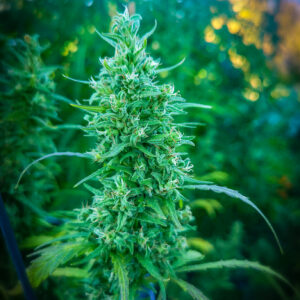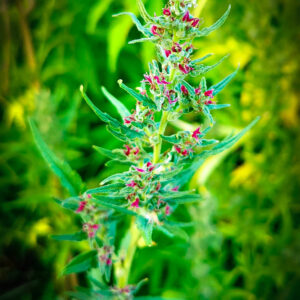Central & Western Steppe. Cannabis has a complex history in steppe regions such as Kazakhstan, southern Russia, and Ukraine, where it appears to have been variously cultivated for fibre and/or ‘drug’ production in the modern, Classical, and prehistoric eras. Six million years ago, true wild Cannabis was already present on the western steppe. The species may have been brought into cultivation and domesticated here independently of its Asian populations. Early evidence for cultivation has been identified in the form of domesticated pollen at several sites, most associated with the Yamnaya culture (3300–2600 BCE).
In its most ancient domesticated form Cannabis was probably a triple-use crop cultivated for fibre, edible seeds, and drugs (whether for medicine or ‘intoxication’) from its leaves and cannabinoid-rich inflorescences. The earliest method for getting high on Cannabis was almost certainly smoking, i.e. fumigation. Pottery braziers, some dating to the Neolithic, have been intepreted as used for this purpose, notably a find of what appear to be charred Cannabis seeds in a third millennium BCE burial from Romania.
In the Histories, Herodotus (c. 440 BCE) describes Scythians using braziers inside tents to inhale smoke on the Pontic Steppe in eastern Ukraine. The Scythians were an Iranian-speaking nomadic culture from Central Eurasia. Residue inside gold vessels dating c. 400 BCE excavated from a Scythian kurgan in Stavropol Krai, southern Russia indicated they were used to drink beverages containing cannabis and opium. Pollen data examined by McPartland suggest Cannabis cultivation became widespread on the western steppe only after it was introduced in the late Bronze and early Iron Ages by the Scythians. The domesticates (“landraces”) cultivated in Scythia were probably representative of its likely oldest domesticated Central Asian form, namely a triple-use crop for fibre, seeds, and ‘intoxication’. Subsequent European domesticates cultivated by cultures such as the Slavs, Romans, and Celts were primarily for fibre, i.e. subsp. sativa. In the modern era, Ukraine and southern Russia became major centres of hemp cultivation.
Definitive formal classification of wild-type populations and landraces (i.e., domesticates) from regions such as Crimea and Kazakhstan is challenging.
Showing all 2 results
-

Kazakh
£19.49 – £38.99 Select options This product has multiple variants. The options may be chosen on the product page -

Selected Siberian (3rd Gen)
£17.49 – £34.99 Select options This product has multiple variants. The options may be chosen on the product page